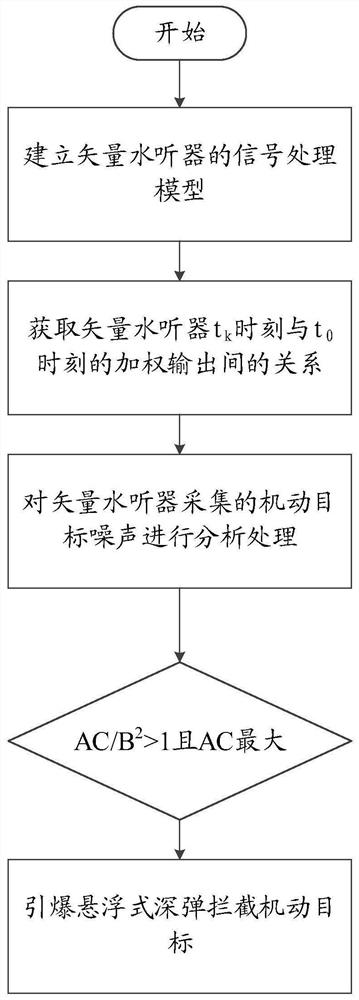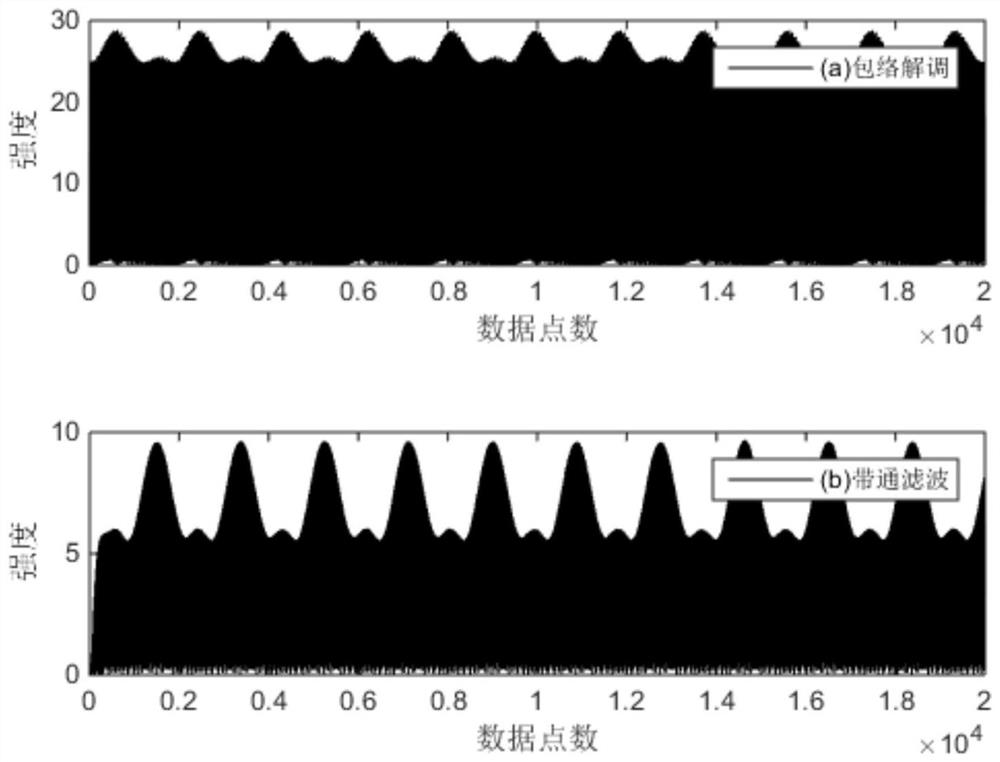Method for judging closest distance to target by acoustic sensor and performing intercepting by using a deep bomb
An acoustic sensor and distance target technology, which is applied in the field of maneuvering target interception to achieve the effects of reducing the computational complexity of algorithms, improving data processing efficiency, and enhancing real-time performance.
- Summary
- Abstract
- Description
- Claims
- Application Information
AI Technical Summary
Problems solved by technology
Method used
Image
Examples
Embodiment 1
[0044] In this embodiment, the acoustic sensor is a vector hydrophone.
[0045] Based on the above-mentioned Doppler effect, such as figure 1 As shown, the present invention provides a method for acoustic sensor to judge that the target is the closest and utilize deep bomb interception, including:
[0046] Step S1: Establish a signal processing model of the vector hydrophone based on the principle of Doppler motion; and obtain the vector hydrophone t based on the signal processing model k moment and t 0 The relationship between the weighted outputs at times.
[0047] Specifically, it is assumed that there is additive white Gaussian noise in the output signal of the vector hydrophone, and the noise is a zero-mean wide stationary random process and is not correlated with each other. Assuming that at time t, an M irrelevant Doppler signal is incident on the vector hydrophone, the azimuth angle is denoted as The complex envelope of the signal is denoted as s 0 (t),s 1 (t),....
Embodiment 2
[0065] Using ideal simulation data for simulation description, the known simulation data satisfies the law of sinusoidal signal variation, and the simulation results are as follows Figure 2-4 shown.
[0066] figure 2 The two figures (a) and (b) in the figure show the results of signal envelope demodulation and bandpass filtering, respectively. image 3 Figures (a) and (b) in (b) show the resampled and smoothed curves respectively, from figure 1 and figure 2 It can be seen that the changing trends of the four block diagrams are basically the same, but the number of data points gradually decreases with different preprocessing steps. Figure 4 The results of the slope ratio are shown. Since the simulated data used is relatively ideal, and according to the change characteristics of the sinusoidal signal, it can be known that the change law of the slope is the same as that of the basic data.
Embodiment 3
[0068] In this actual test, the data sampling rate f s =200kHz, if the data whose length is T_length=0.1s is selected for analysis, the number of sampling points of the original data is f s ×T_length, that is, 20000 points.
[0069] Perform signal envelope demodulation and bandpass filtering on the data, the results are as follows Figure 5 In (a) and (b) shown.
[0070] Assume that the re-recovery rate and smoothing step are the same as those in the above simulation, that is, the re-recovery rate is 1 / 10 and the smoothing step is 30. After resampling, the number of sampling data points changes from the original 20000 points to 20000 / 10=2000 points; after smoothing, the sampling data points change from 2000 points to 2000 / 30=660 points. The results are as follows Figure 6 In (a) and (b) shown.
[0071] Carry out slope ring ratio on the preprocessed data, that is, perform linear fitting to find the slope, such as Figure 7 The slope change curve of the test data obtained...
PUM
 Login to View More
Login to View More Abstract
Description
Claims
Application Information
 Login to View More
Login to View More - R&D
- Intellectual Property
- Life Sciences
- Materials
- Tech Scout
- Unparalleled Data Quality
- Higher Quality Content
- 60% Fewer Hallucinations
Browse by: Latest US Patents, China's latest patents, Technical Efficacy Thesaurus, Application Domain, Technology Topic, Popular Technical Reports.
© 2025 PatSnap. All rights reserved.Legal|Privacy policy|Modern Slavery Act Transparency Statement|Sitemap|About US| Contact US: help@patsnap.com



